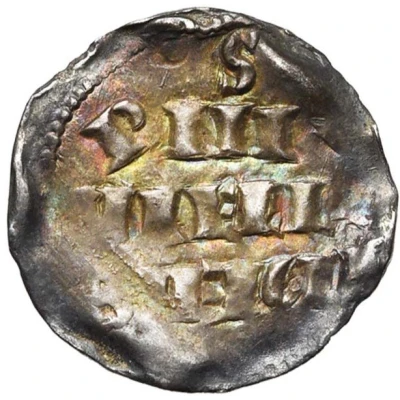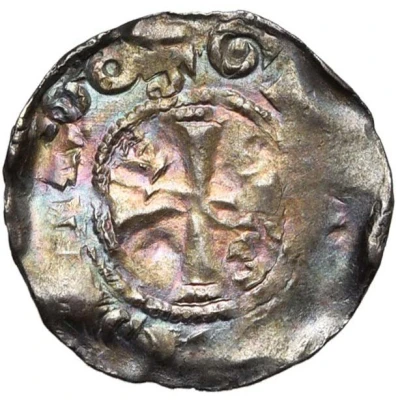


© Jean Elsen & ses Fils s.a.
Denier ND
| Silver | 0.85 g | - |
| Issuer | Abbey of Nivelles (Belgian States) |
|---|---|
| Type | Standard circulation coin |
| Years | 1041-1060 |
| Value | 1 Denier (1⁄240) |
| Composition | Silver |
| Weight | 0.85 g |
| Shape | Round (irregular) |
| Technique | Hammered |
| Orientation | Variable alignment ↺ |
| Demonetized | Yes |
| Updated | 2024-10-04 |
| Numista | N#215323 |
|---|---|
| Rarity index | 100% |
Reverse
Cross pattée with alpha and omega in 1st and 4th cantons.
Scripts: Greek, Latin
Lettering: S GERTRVDIS VIRGO
Unabridged legend: Sanctus Gertrudis Virgo
Translation: Saint Getrude Virgin.
Comment
"At the beginning of the 11th century, Lambert le Barbu, Count of Louvain, proclaimed himself avowal of the Abbey of Nivelles. His successor Henry I took advantage of this to strip the abbey of a large part of its temporal estate. In 1040, Abbess Richeta obtained from Emperor Henry III the restitution of property usurped by the Counts of Louvain. The imperial diploma also granted the abbey the right to mint coins. Count Lambert II refused to comply, and the imperial decision was confirmed by a new act in 1041. The abbess of Nivelles obtained further pontifical confirmations from popes Clement VI, in 1047, and Leo IX, in 1048. This denarius has been seen as the product of the minting of the abbey workshop usurped by the Counts of Leuven in the first half of the 11th century, but finds prove that it dates from the middle of the 11th century and is contemporary with the Brussels denarius. The stylistic similarity of these two coins is obvious. Perhaps they were both minted in Brussels. The abbey of Nivelles owned a piece of land there."Jean Elsen & sons
Interesting fact
One interesting fact about the Standard circulation coin Denier ND (1041-1060) from Abbey of Nivelles (Belgian States) made of Silver weighing 0.85 g is that it was minted during a time of great religious and political significance. The Abbey of Nivelles was a powerful and influential religious institution in the region, and the coin's minting was likely closely tied to the abbey's economic and political interests. The use of silver in the coin's production also speaks to the value and prestige associated with this precious metal during the time period.